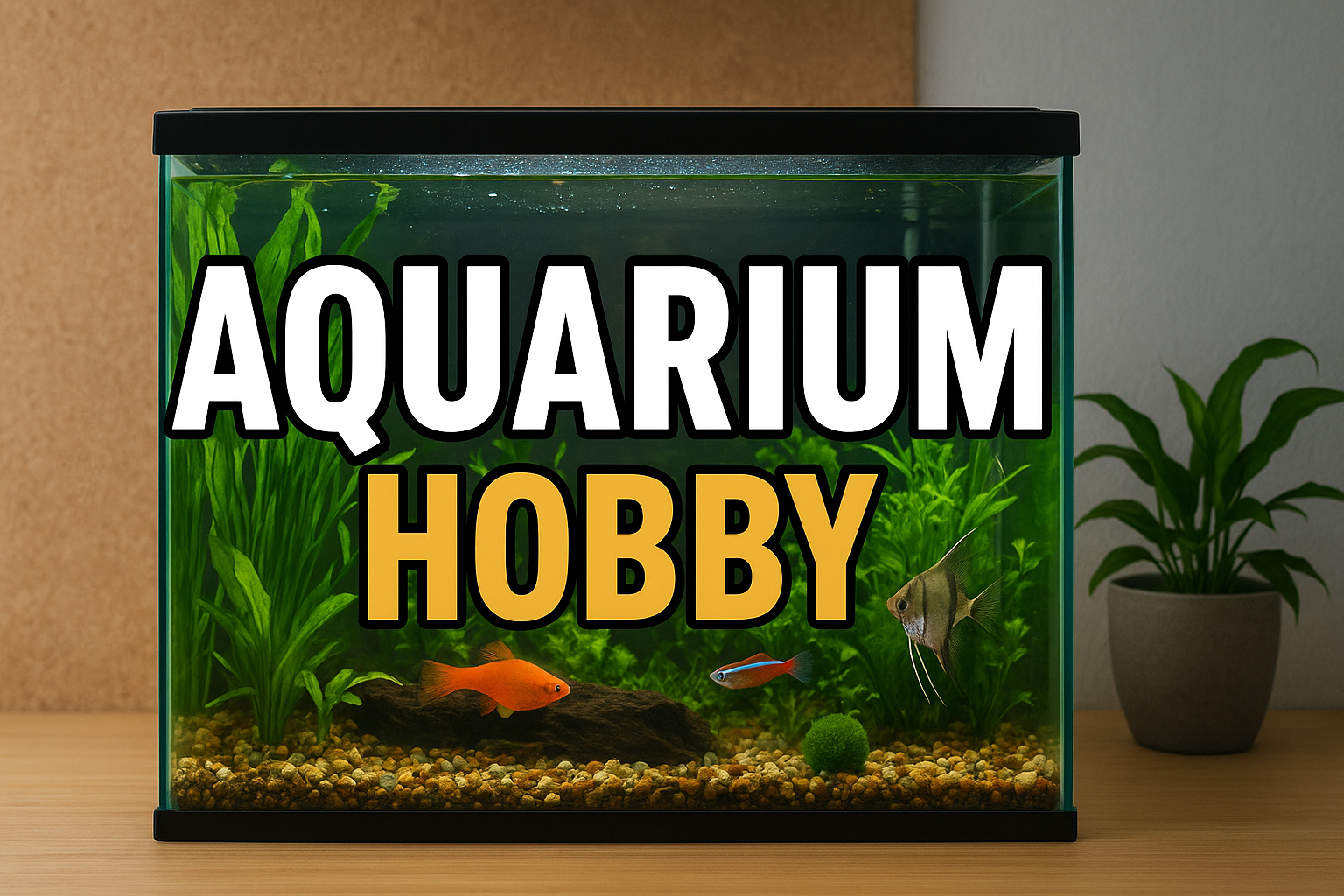The aquarium hobby is one of the most rewarding pastimes in the world. It combines the beauty of aquatic life with science, creativity, and relaxation. Whether you’re drawn to the vibrant colors of tropical fish, the calming presence of planted tanks, or the challenge of breeding unique species, aquariums offer something for everyone.
Many people start small, perhaps with a simple goldfish bowl or a basic freshwater tank. Over time, they discover the endless possibilities—from aquascaping to saltwater reef systems. The aquarium hobby has grown into a global passion, with millions of enthusiasts, clubs, and even international competitions dedicated to aquascaping and fishkeeping.
In this guide, we’ll explore everything you need to know about the aquarium hobby, from its benefits to setting up your first tank, choosing fish, maintaining water quality, and expanding into more advanced aspects of fishkeeping.
Why Choose the Aquarium Hobby?
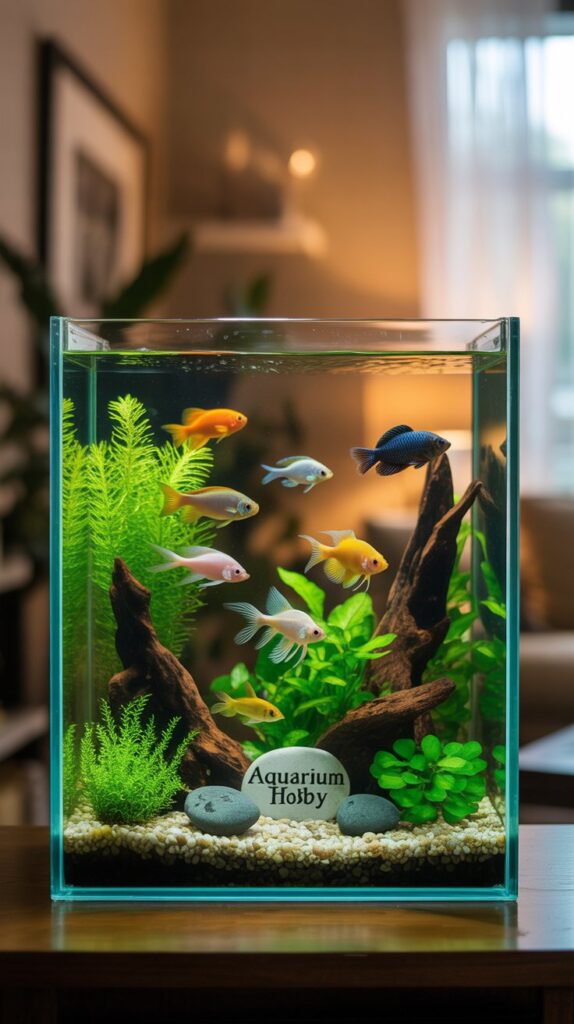
The aquarium hobby isn’t just about keeping fish—it’s about building and maintaining a thriving ecosystem. Here are some of the top reasons people fall in love with it:
1. Stress Relief and Relaxation
Studies have shown that watching fish swim reduces stress and lowers blood pressure. Aquariums create a calming atmosphere, making them perfect for homes, offices, and even hospitals.
2. Aesthetic Beauty
A well-designed aquarium is like living art. From lush planted tanks to colorful coral reefs, aquariums bring natural beauty indoors.
3. Educational Value
The aquarium hobby teaches responsibility, biology, chemistry, and ecology. It’s especially beneficial for children, who learn about aquatic life and the balance of ecosystems.
4. Creativity and Personal Expression
Aquascaping (the art of designing aquariums) allows hobbyists to express themselves through layouts, rock formations, driftwood, and plant arrangements.
5. Community and Social Connection
Aquarium clubs, online forums, and competitions allow hobbyists to share knowledge, trade fish, and form friendships worldwide.
Freshwater vs. Saltwater Aquariums
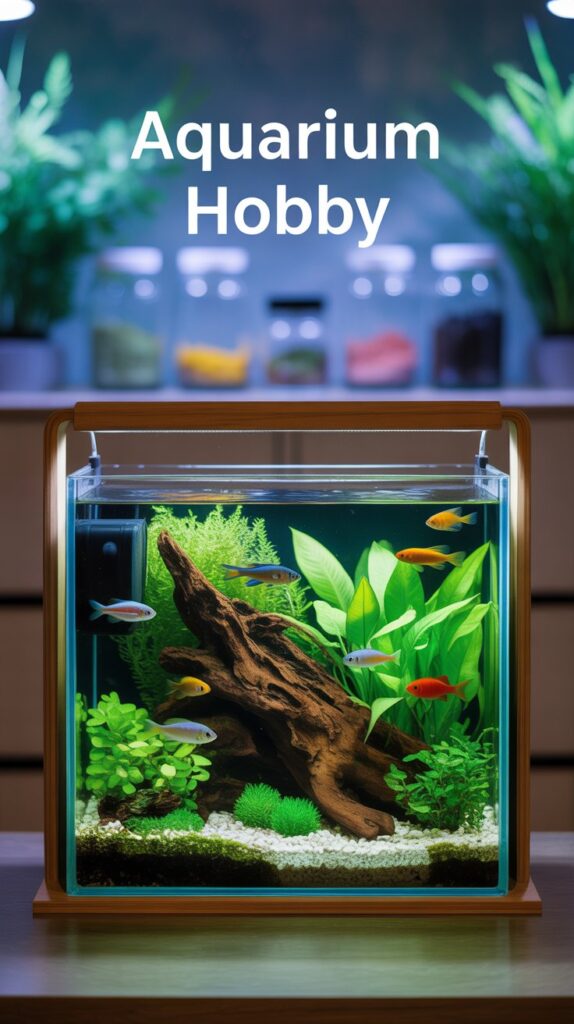
One of the first decisions in the aquarium hobby is whether to start with freshwater or saltwater.
Freshwater Aquariums
- Easier to set up and maintain
- More affordable equipment and fish
- Ideal for beginners
- Popular fish: Guppies, Betta fish, Neon Tetras, Angelfish
Saltwater Aquariums
- Require more equipment and knowledge
- Stunning fish and coral species
- Higher cost but more rewarding for advanced hobbyists
- Popular marine life: Clownfish, Tang fish, Coral reefs, Anemones
For beginners, freshwater tanks are recommended, while saltwater setups are ideal for those ready to take their hobby to the next level.
Essential Equipment for Aquarium Hobbyists
A successful aquarium requires the right equipment. Here’s a breakdown:
- Aquarium Tank – Choose the right size; bigger tanks are easier to maintain.
- Filter System – Keeps water clean and removes toxins.
- Heater – Necessary for tropical fish to maintain stable water temperature.
- Lighting – Supports plant growth and enhances fish colors.
- Substrate – Gravel, sand, or soil depending on freshwater or saltwater setup.
- Air Pump – Provides oxygen for fish.
- Water Test Kits – Measure pH, ammonia, nitrite, and nitrate levels.
- Decorations and Plants – Create hiding spots and enhance aesthetics.
- Fish Food – Varied diets depending on species (flakes, pellets, frozen food).
- Aquarium Stand and Cover – Ensures stability and prevents fish from jumping out.
Setting Up Your First Aquarium
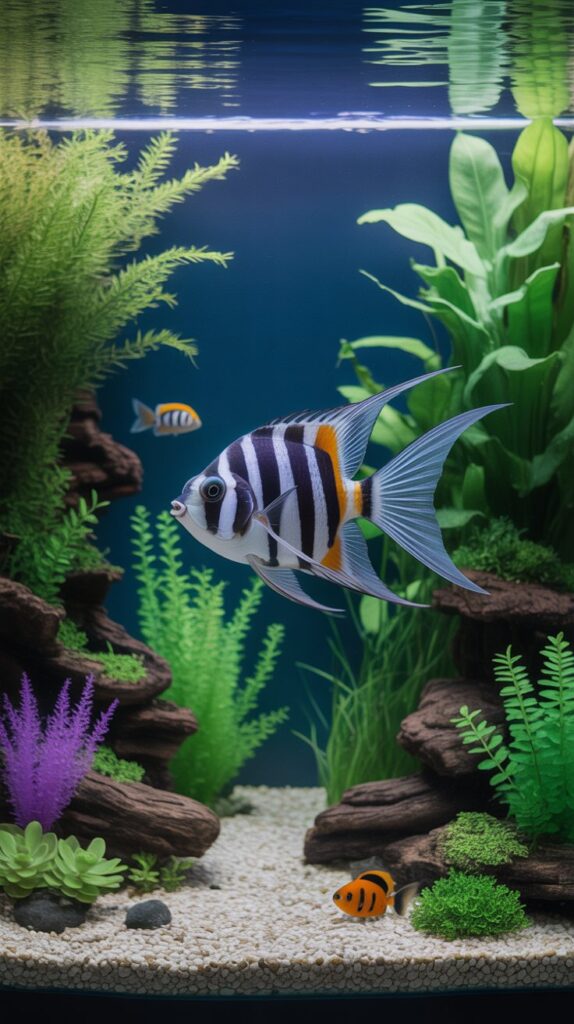
Starting your first aquarium is exciting. Follow these steps:
Step 1: Choose Tank Size
Beginners often start with 20–30 gallons. Larger tanks provide more stability and reduce maintenance challenges.
Step 2: Install Equipment
Set up the filter, heater, and lighting before adding fish.
Step 3: Add Substrate and Decorations
Wash substrate thoroughly before placing it. Add rocks, driftwood, and plants to create a natural environment.
Step 4: Fill with Water and Cycle the Tank
Cycling builds beneficial bacteria that break down waste. This process usually takes 3–6 weeks. Never add fish before cycling is complete.
Step 5: Introduce Fish Slowly
Start with hardy species like guppies or tetras. Avoid overstocking—rule of thumb: 1 inch of fish per gallon.
Step 6: Monitor Water Quality
Test water regularly and perform partial water changes weekly.
Choosing Fish for Your Aquarium Hobby
The aquarium hobby offers endless fish choices. Popular categories include:
1. Community Fish
Peaceful and colorful species that live well together. Examples: Neon Tetras, Mollies, Platies.
2. Show Fish
Larger or more vibrant fish that serve as the centerpiece. Examples: Angelfish, Discus, Betta.
3. Bottom Dwellers
Help clean the substrate and add variety. Examples: Corydoras Catfish, Plecos, Loaches.
4. Livebearers
Fish that give birth to live young. Examples: Guppies, Swordtails, Endlers.
5. Marine Fish
For saltwater aquariums. Examples: Clownfish, Damsels, Wrasses.
Aquascaping in the Aquarium Hobby
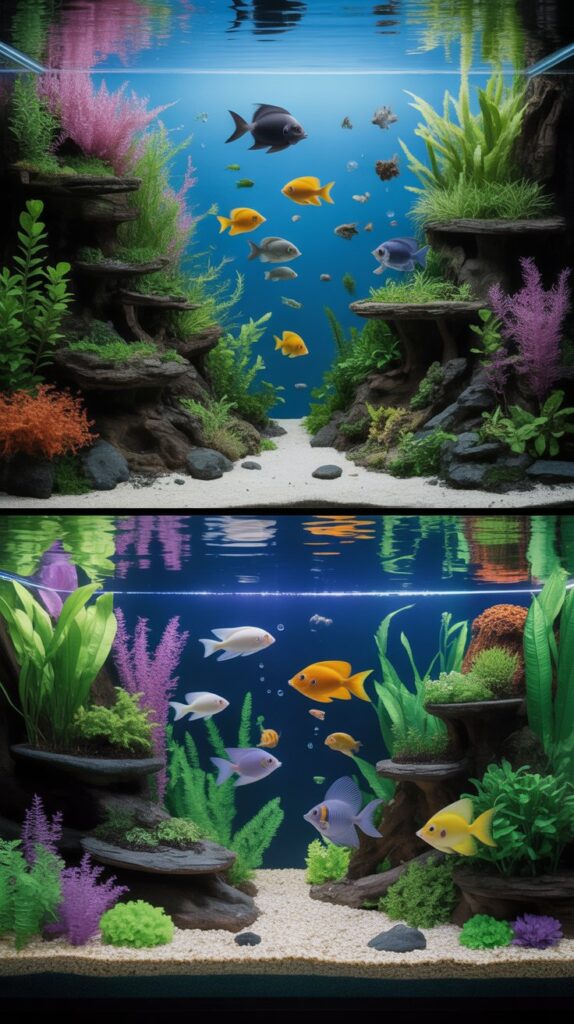
Aquascaping is a creative side of the aquarium hobby that turns tanks into underwater landscapes.
Popular Aquascaping Styles:
- Nature Style: Mimics natural landscapes.
- Dutch Style: Uses colorful plants arranged like a garden.
- Iwagumi: Minimalist design with rocks and plants.
- Jungle Style: Wild, overgrown appearance with dense plants.
Aquascaping requires careful planning, plant selection, and CO₂ systems for optimal growth.
Maintenance in the Aquarium Hobby
Proper maintenance keeps your aquarium healthy and beautiful.
- Daily: Feed fish, check equipment, observe behavior.
- Weekly: Test water, clean glass, perform 20–30% water changes.
- Monthly: Clean filter media, prune plants, vacuum substrate.
Neglecting maintenance can lead to algae growth, disease, and fish loss.
Common Challenges in the Aquarium Hobby
Even experienced hobbyists face challenges. Here are a few:
- Algae Overgrowth – Caused by excess light or nutrients.
- Fish Diseases – Ich, fin rot, and fungal infections.
- Water Quality Issues – Ammonia or nitrite spikes from poor cycling.
- Aggressive Fish – Some species may fight or bully others.
- Overstocking – Too many fish can overwhelm the system.
Solutions include regular water changes, quarantine tanks, and careful species selection.
Expanding Your Aquarium Hobby
As you gain experience, you may explore:
- Breeding Fish – Raising fry can be rewarding and profitable.
- Planted Tanks – Advanced aquascaping with live plants.
- Reef Tanks – Saltwater setups with corals and invertebrates.
- Biotope Aquariums – Recreating natural habitats of specific species.
- Monster Fish Tanks – Large aquariums with species like Arowana or Oscars.
Benefits of the Aquarium Hobby for Mental Health
The aquarium hobby isn’t just visually appealing—it supports mental wellness:
- Reduces anxiety and depression.
- Provides a sense of responsibility and routine.
- Encourages mindfulness and relaxation.
- Offers a rewarding feeling of accomplishment.
Conclusion
The aquarium hobby is more than just keeping fish; it’s about building ecosystems, creating beauty, and connecting with nature. Whether you’re a beginner with a small freshwater tank or an advanced aquarist running a reef system, this hobby offers endless opportunities for learning and enjoyment.
With the right setup, regular maintenance, and passion, anyone can succeed in the aquarium hobby. Start small, learn continuously, and expand at your own pace—you’ll soon discover why millions of people worldwide are captivated by this fascinating pastime.
FAQs About the Aquarium Hobby
Q1: Is the aquarium hobby expensive?
It depends on the type of aquarium. Freshwater setups are affordable, while saltwater reefs can be costly due to specialized equipment and livestock.
Q2: How much time does aquarium maintenance take?
Basic maintenance takes 20–30 minutes per week. Larger or more complex tanks may require more time.
Q3: Can beginners keep saltwater aquariums?
Yes, but it’s recommended to start with freshwater first. Saltwater tanks require more experience and care.
Q4: What fish are best for beginners in the aquarium hobby?
Guppies, mollies, platies, neon tetras, and bettas are great starter fish.
Q5: Do aquariums help reduce stress?
Yes, studies show that aquariums lower stress and anxiety levels, making them excellent for homes and workplaces.
Q6: How often should I feed my fish?
Most fish should be fed 1–2 times daily, only what they can eat within 2–3 minutes.
Q7: What size tank should a beginner start with?
A 20–30 gallon tank is ideal for beginners since it provides stability and room for mistakes.

